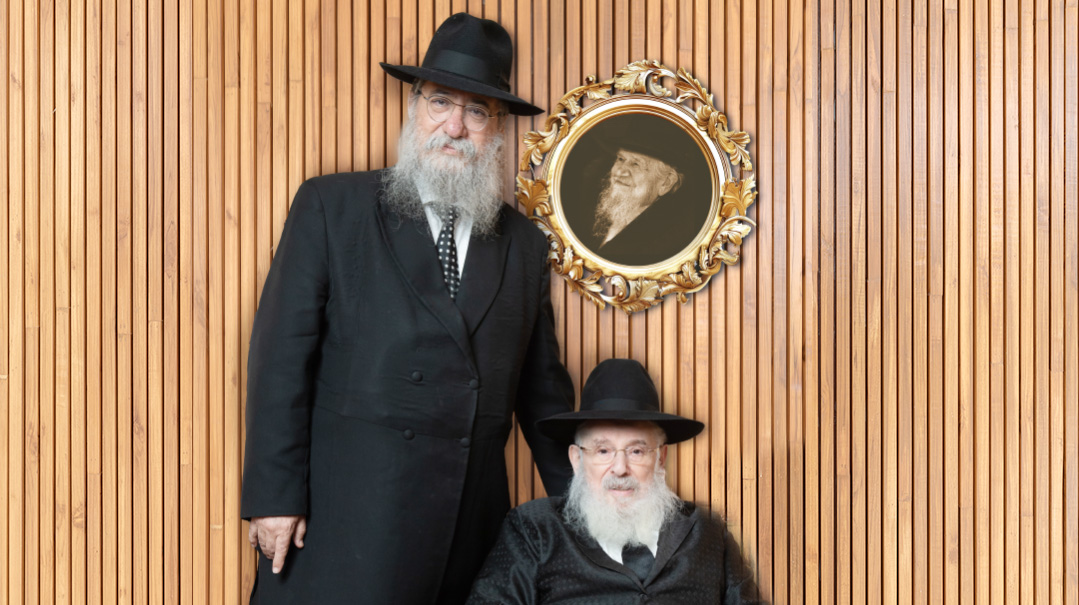Accounts Receivable


When Karl Wertheim secured his fortune under secret numbered accounts in Switzerland he knew he had outsmarted the Nazis. But nearly 80 years later the vast inheritance has somehow disappeared deep in the bowels of a German bank. “These are very sophisticated banks that aren’t going to misplace this kind of money” says Rodal. “Our position is straightforward. They have the money. They have the account numbers” (Photos: AFP/Imagebank)yes
F rom an office in Dania Beach Florida attorney Yechezkel (Chezky) Rodal has gone to battle against a German bank he claims has absconded with a family fortune worth $3 billion.
The suit filed on behalf of the Wertheim Jewish Education Trust against Deutsche Bank alleges that the bank has refused to return the vast sums that were transferred to its coffers in the 1990s funds belonging to heirs of the Wertheim family fortune whose trust fund has been earmarked for Jewish education causes.
The accounts date back more than 80 years as the fortune crisscrossed from Spain to Switzerland where it was protected by Credit Suisse during the Nazi regime under secret numbered accounts and pseudonyms. Those accounts according to the lawsuit were later transferred to Deutsche Bank.
“This lawsuit revolves around one question: What happened to the fortune of the Wertheim family?” Rodal tells Mishpacha. “We know that Credit Suisse was their bank and they gave the Wertheim heirs documents that showed a transfer of money to Deutsche Bank on January 20 1993. Since then the trail has gone cold.”
Stashed Assets
The Wertheims were a Jewish family of industrialists from Berlin and Frankfurt. The Berlin branch of the family owned a chain of department stores and valuable real estate holdings all of which were nationalized by the Nazis during WWII. After the war a Nazi-affiliated lawyer in whose care the assets were transferred located a few family members in America who had managed to escape from Europe with nothing but the clothes on their backs and persuaded them to sell their property and business rights for a mere few thousand dollars. (The property was at the center of a prolonged legal battle that concluded in 2007 with an agreement to pay compensation of €88 million to the heirs of the Berlin Wertheims for their rights to the land upon which a huge office complex was built near the Sony Center in the heart of Berlin.)
Yet the Frankfurt branch of the family — the one at the center of the current lawsuit — managed to keep their assets intact throughout the war years and beyond. The patriarch of this Wertheim line was Joseph Wertheim who founded a textile and sewing machine empire back in 1862. Wertheim had international business ties that stretched from Europe to Australia and invested in properties in both Germany and the US. The family also acquired a valuable art collection.
When Joseph Wertheim father of ten children passed away in 1899 his empire included 750 employees with revenues of millions of dollars a year. The management of the business was turned over to Karl his fifth son. Four of Karl’s siblings were later murdered by the Nazis and the rest including himself left Germany with the rise of anti-Semitism after World War I. Karl realized Germany did not bode well for the Jews and so he moved his business interests to Barcelona Spain where he assumed the new identity of Carlos Vallin-Ballin taking on his mother’s maiden name.

The big question remains: How is it possible that a major international bank can stash away funds and then claim to know nothing about it?
The company was the largest export firm in Catalonia in the days between the world wars and as early as 1931 Karl Wertheim began stashing his assets in Switzerland. He opened an account with Credit-Anstalt which later became Credit Suisse and in order to protect his family fortune opened several more accounts with secret numbers and assumed names.
Karl and his wife Maria had no children though and so he appointed his wife’s nephew Dr. Ambrosius Wolfgang Bauml as his heir. After Karl’s death in 1945 Maria brought Dr. Bauml on board and together they managed the business.
The financial empire grew far beyond the company’s trademark Wertheim-Rapida sewing machines and assets branched out to include investment portfolios real estate in Europe and the United States as well as the tremendous art collection that had been given to a Swiss company to manage. (The valuable artwork was regularly loaned to museums around the world including the Prado Museum in Madrid and the National Art Museum of Catalonia in Barcelona.)
After the war Maria Wertheim’s reputation spread as a successful and well-connected businesswoman. She was also known for her acts of charity and support and contributed to the rebuilding of Frankfurt and London after the war. As a token of appreciation to the Wertheim family for their assistance to England Queen Elizabeth met Maria and thanked her personally. In 1959 Maria Wertheim informed Credit Suisse that Dr. Bauml had power of attorney over all the family accounts and his diary entries included the list of accounts (with their pseudonyms) and how much money was in each one. According to a handwritten financial ledger from 1961 the family bank accounts had at the time more than $144.5 million. With inflation and linkage alone the lawsuit claims the current value of these sums today would be $2 951 934 430 — or nearly $3 billion. And that’s not including monies that were surely invested over the years and that have accrued even more value. (excerpted)
Oops! We could not locate your form.







